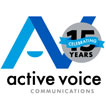
Don’t you just love writing days? You leisurely pour your coffee, sit down at your computer and let the words flow for hours and hours. You get blog post after blog post written — all before lunch — and all is well with the world.
Hahahaha!
In reality, it’s more like this: You grab your coffee, sit down to write and get interrupted by 27 things before you’ve even finished one sentence. You barely make it through the first paragraph by lunch and completely give up for the afternoon while you answer IMs and emails. Then, after everyone else is asleep, you get to writing.
We all know it’s ideal to be able to sit down and spend three or four hours working intently on a single task, without interruption, but the reality is that as creative professionals, we just don’t get that luxury very often. At least not during working hours. And yet, burning the midnight oil and devoting weekends to work isn’t sustainable. So here are seven ways to creatively manage your time.
Have a single calendar.
With work and personal time being more interspersed than ever, it’s essential to be able to see all of your obligations on one calendar. It’s the absolute worst when you’ve cleared your work schedule only to receive an alert that you have a parent-teacher conference call in 15 minutes. So step one is to cross-reference your personal and professional obligations.
Block your time.
You’ve heard this one before, but it’s time to get serious about it. Regularly block out the time on your calendar so that others cannot schedule you, and — here’s the hard part — hold firm. Do not accept any meeting requests during those blocks. Give yourself two to three hours at a time multiple times a week for getting creative work done. If you need to be flexible one day — say your boss pulls you into an emergency strategy session — make sure you find space in your calendar for your creative time on another day, even if it means canceling something.
Determine your best hours of productivity, and schedule accordingly.
Are you a morning person, or do you find that you’re in a daze until about 10 a.m.? Plan your day around your circadian rhythm, and schedule your creative time for when you’re at your best. Don’t leave writing until the end of the day if you hit your stride at 7 a.m. You’ll be more brilliant, creative and productive if you write when you’re bright-eyed and bushy-tailed (or at least, you know, fully conscious). Leave emails and organizational tasks for your foggiest hours.
Close those tabs.
If you’re anything like me, you have a million and one tabs open on your screen right now. Google Analytics, Twitter, your Target shopping cart, articles you want to come back to but never will, etc., etc., etc. And that’s just on your laptop. Forget about what’s open on your phone.
But here’s the thing … Every tab you have open is a potential distraction. And if you have just 30 minutes to write, you need to have a workspace that’s free from distractions. So close the tabs before you intend to write. At the very least, minimize everything. Then shut down your email, turn off chat and switch your phone to silent — not just vibrate, totally silent. This will give you the best chance at concentrating on being creative.
Have a reasonable to-do list.
We’re all guilty of over-scheduling our days from time to time. But try not to make it a habit. Having too many things on your to-do list for a single day is just setting yourself up for failure. Make sure you know exactly which project you need to tackle each day during the time you have blocked on your schedule to be creative. Do your research ahead of time, and have your interview notes and links available. Have the right document open so that when you get back to your desk you can dive right in.
Be honest about what you can accomplish.
Speaking of setting yourself up for failure … don’t give yourself 30 minutes to write a 1,000-word article. You’re going to need a larger block of time for that. Instead, set realistic expectations for what you can get done in the amount of time you have. Realistically maybe you can research important stats you’ll need, outline the article or write an introduction.
Outsource what you can.
Take a look at your typical to-do list and highlight any tasks that could be done by someone else. Then, train someone else to do them. The time you take now will pay off in spades later. If you don’t have anyone on your team who can handle the tasks, look elsewhere.
Of course, as a content agency, we’d love nothing more than to write your articles, blog posts, guides, etc. for you, but outsourcing even minor tasks can help. Perhaps a virtual assistant could help with research, scheduling interviews, running reports or document prep.
When AVC takes on large website projects, for example, our virtual assistant uses the site map to set up a folder structure in Google Docs and creates all the documents for all the pages. She puts important header information into each document, including links to relevant resources, so that when writing begins, we have everything we need to get started. It also gives us the advantage of having consistent files across the project and across writers.
Time Management Takes Practice
Of course, you can’t expect perfection. There will always be days that go off the rails and you end up writing in five-minute increments. But with a little practice — and planning and self-discipline — you can make those days fewer and farther between.
Now we want to hear from you! Tell us: What are your time management tricks?

Great tips and reminders! I’ve been drowning in meetings lately and closing the tabs and blocking time for creative writing (i.e. getting actual shit done!) are actionable steps I can take right now. I block time for everything else but creative writing always gets pushed. Need to potentially look at outsourcing too… that is something I dread though. Love your e-newsletters, Steph!
Thanks, Steph! 🙂 And sorry I missed this when you posted it!